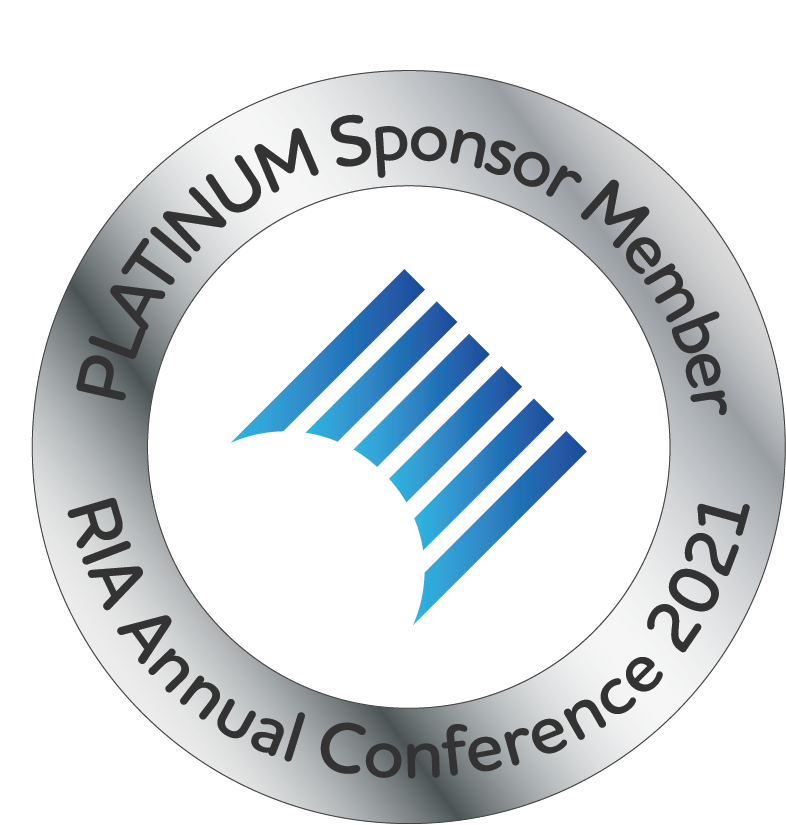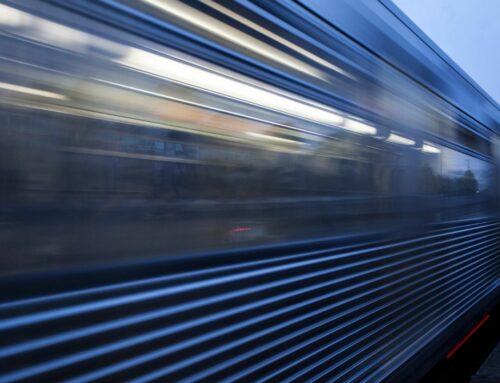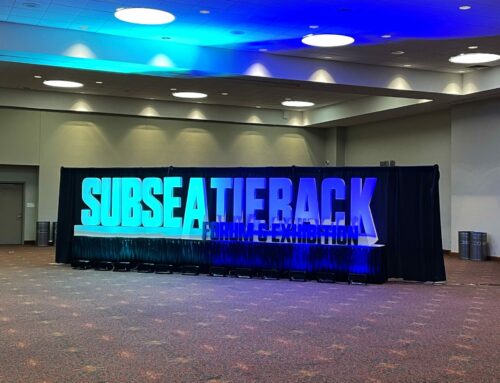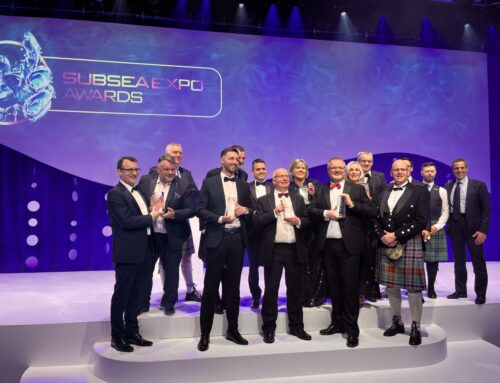BLOG: COP26 and Covid Recovery – Build Back Better, Build Back Greener, Build Back Rail. A View from the Trenches…
November 3, 2021
At Viper we have challenged ourselves to understand, measure and reduce our carbon footprint across our operations and also look at where we support our customers and local areas in improving their environmental performance. We believe that innovative thinking and the application of technology can play a huge part in achieving the necessary improvements, allowing everyone to go about their daily lives without having to make major sacrifices in living standards or the convenience of modern living.
It forms part of our guiding principles that we have looked to ensure we play our part in reducing global warming and achieve a net-zero carbon target for our operations and set the standard for the SME business community. We have made changes that fit with our Vision and Mission, such as making a land purchase for carbon sequestration, where our employees will act as custodians for the existing woodland and work with the Woodland Trust and Forestry Commission to plant the majority of the remaining unplanted 17 acres with new, mixed deciduous woodland and perform experimentation to understand the best methods of managing land for carbon sequestration.
It is this commitment to our customers, industries and partners that has encouraged us to be Platinum Sponsors of the UK Rail Industry Association’s (RIA) AGM, Dinner and RISE Awards. In recognition of this, our Rail Team at Viper Innovations have been considering the challenges posed by the theme of building back better and greener from the pandemic, using rail. We have been asking ourselves what practical steps could be taken by industry to ensure that the UK plays its part in achieving the ambitious and essential steps required to achieve carbon targets by 2050.

Modal shift to rail
The worldwide economy relies on the movement and interaction of people and goods – from major commercial activity like transporting essential bulk minerals or just the buying of a coffee and breakfast on the way to the office. Any major move to stop people from travelling and interacting, or making major lifestyle changes in consumption, will have major consequences for the health and wellbeing of individuals and society at large. Therefore from our viewpoint, and we think a generally accepted principle, is that the only real option for the country is to create maximum modal shift from road, sea and air to rail. No other means of transport on the near to medium horizon can match the low levels of carbon that rail can deliver per passenger or freight mile, and some of the exciting innovations currently making the headlines in transportation are very many years away from practical delivery – too late to make a major contribution to the targets set.
Whilst rail is required as the spine and majority component of the journey, we do believe that innovations in the last mile, at the interchange and door to door journey planning and delivery will see a plethora of current technology and near-term developments that enable freight and passenger to access the rail network. Mobility as a Service has been an established focus for many years and can provide options for access to mass transport from app development and enabling realtime information share to inform the traveller and planner, and electrifying the short-hop journeys for both people and goods will reduce emissions greatly and play to the strengths of electric vehicles and a charging network. Drone usage will likely increase for specific package applications and walking/cycling aids will increase to speed up and increase the distances that can be travelled for access to a station, with additional infrastructure to open up these modes.
The path of least resistance
In order to achieve a shift to rail, however, we believe there is a need to implement some basic principles. Firstly, rail needs to be the path of least resistance, meaning that we need to enable the whole journey from door to door to wherever a person or a goods delivery might want or need to go – and we need to deliver the shortest journey time in full to the delight of the user, every time. This requires trains to go where they are needed and wanted and for the system to provide the right levels of reliability and availability every time.
Considering the first point, we need to ensure that town and district planning is required to implement mass transport at the outset, ensuring that freight hubs are interconnected by rail across the country and major housing developments have some form of access to mass transport, either in the form of light rail or new branch lines. We also need to create new train paths that open up areas of the country currently underserved by rail or where there are significant issues with other forms of transport.
We see that this creates a need for action at both ends of the spectrum, with the highest level being between central and local Government, with a move to devolve both decision making and the means to deliver a greater number of train paths and destinations to a local authority, whilst retaining the ability to plan the major network at a central level. The move to Great British Railways could present an opportunity to deliver this change by providing the decision making and finance raising powers to deliver network change at a local level, potentially by creating further examples of TfL models around the country and by embedding rail specialists into local authorities to enable a deeper level of knowledge and understanding in local decision makers.
The second aspect – delivering each train path in full, to the delight of the user – then falls to a collaboration across the rail industry to understand and eliminate asset failures, wherever and however they occur, and to provide a seamless service with the last mile and interchanges required that make the door-to-door journey effortless. We see this as the role of process and technology innovation, with an opportunity here for greater embedded collaboration between maintenance, engineering, operations, the supply chain and academia to deliver the required insight into failures and the means to eliminate them. We see the potential for an extension of the Modernising Maintenance programme where a greater emphasis is placed on developing AI and machine learning from instrumented assets, digital twins and offline test rigs to develop new methods of working, with new technology developed to enable the railway to operate more effectively in a climate-changed world. The improved asset knowledge and insights created from data will improve asset management over the long term.
Viewing the Railway as an Enabler
There are well documented financial returns from rail, with sources quoting that the network returns over £15b per year to the economy in a normal year and the carbon reductions from moving to rail are well documented and accepted. However, we consider that in order to deliver the changes stated, there needs to be a radical rethink on how the railway is viewed and paid for. The need to make rail the path of least resistance needs it to be the most cost effective option as well as the easiest to use, thus access prices need to be reduced. To do this, we think that we could reconsider both how the railway is accounted for with respect to its overall contribution to the economy and the environment and also with additional services it could offer, potentially with international carbon pricing put onto journeys and also additional funding raised from ethical private sources for national and local government.
We think it could be possible to look at the railway as a multi-strand service provider, also. We are seeing more focus on utilising freight lines for passenger movement and for light rail to use the main line metals, however, with additional services offered from the railway infrastructure over and above the movement of people and goods more revenue streams could be created. Although looked at previously, rail can provide a conduit and connectivity for communications, with fibre backbones being opened up to share at points on the network where providing broadband might be difficult. The traction and lineside electrical network could be utilised for building in resilience to supplies for rural areas and for the creation of charging networks for electric vehicles. All of this could be charged for to create additional revenue, potentially returning money to the local area for further investment. We could also see greater emphasis on EV charging as part of ticket costs, with capacity at car parks increased. From a more blue-sky perspective, new or upgraded lines could be designed to move water, either as a result of flood or for moving water from one part of the country to another, again charging for the service. We could also see parcels being moved on the network using off-peak trains and a greater opportunity for local movement of goods around the devolved network, again for a chargeable fee.
The key to all of these changes is the ability to make decisions and deliver at a local level, whilst being supported with national network planning.
Conclusions
In reality, rail is the only option for the UK to meet its carbon objectives, but we need to make sure it is the path of least resistance with a greater emphasis on local decisions and delivery to ensure it goes where the customer wants it to go, when they want to go there. We need to ensure distribution hubs and large developments are always connected by rail and that pricing is lower than other forms of transport. We need to enable the end-to-end journey, make it faster than alternatives and to create seamless movement plus look for other revenue streams to be developed by utilising the infrastructure for its attributes and we need to see it funded based in its return on investment across a national picture. The most important aspect, though, is the need to make sure that each and every journey is delivered in full, to the delight of the user, every time. This requires the network to provide the best reliability and availability and to be a trusted and reliable partner for everyone using it.
At the core of this, whether the metric is carbon, capacity, cost or customer, is the humble train path and the need to make sure we continue to collaborate, innovate and deliver each one at the lowest possible cost with no adverse effects on the health and safety of anyone. Viper Innovations will continue to play its part in the collaboration by providing the tools, asset information and support to enable the best possible outcome for passengers and freight.




